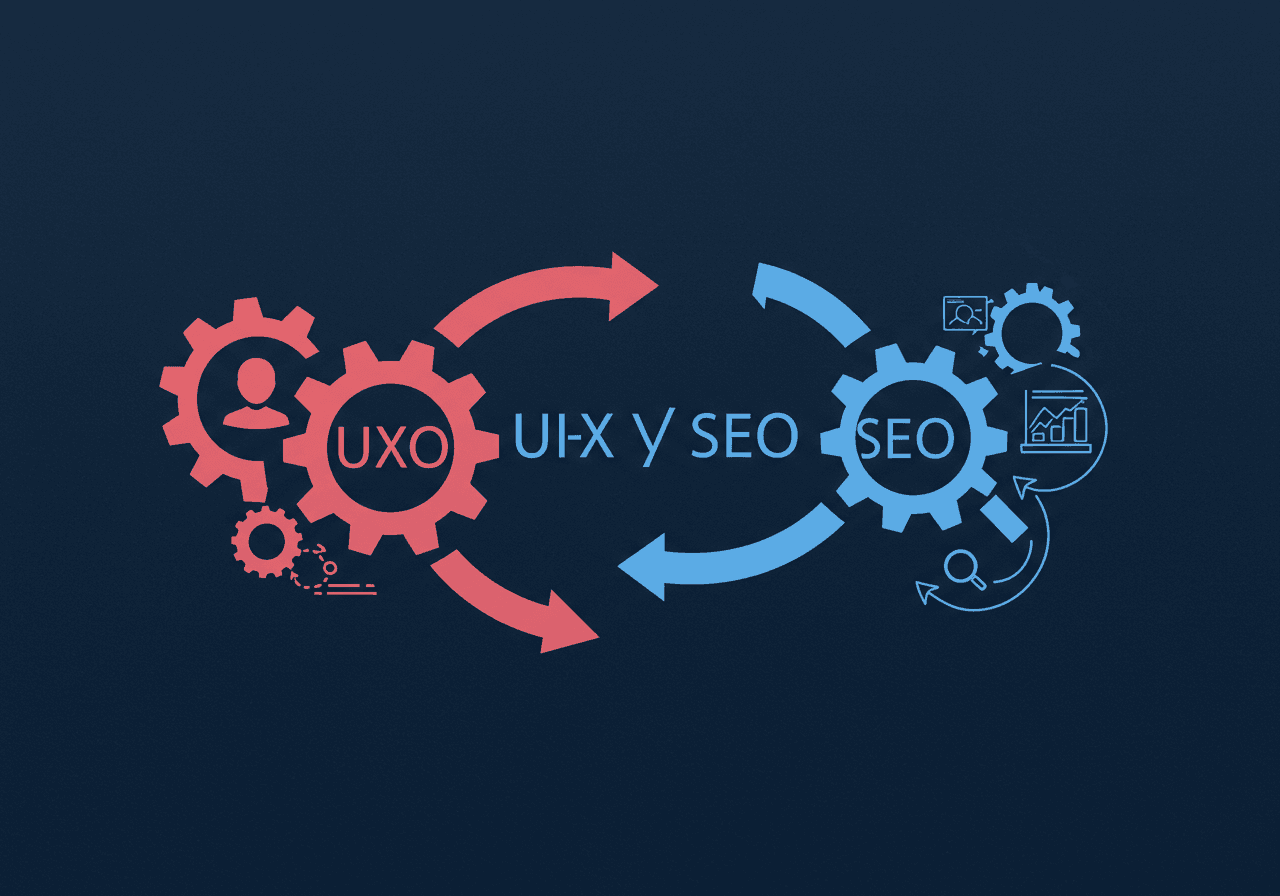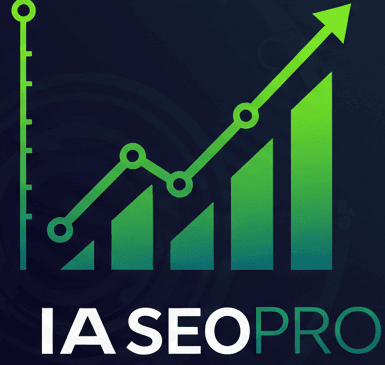
UX and SEO: How Great User Experience Drives Your Rankings (Updated 2025)
📋 Professional Guide Contents
The UX-SEO Synergy: Why Does Google Care About User Experience?
Google faces a fundamental strategic challenge: keeping its users satisfied to preserve its search market dominance. Every time a user clicks on a result and has a frustrating experience, Google’s quality perception is compromised. This reality has driven the evolution toward algorithms that prioritize genuine user satisfaction over isolated technical factors.
User Behavior Signals: The New Quality Indicators
Google uses sophisticated user behavior metrics as indirect indicators of quality and relevance. These signals include:
- Dwell Time (Time on Page): Users who stay longer on your page after arriving from Google indicate relevant and engaging content that satisfies their search intent.
- Contextual Bounce Rate: A low bounce rate on conversion pages suggests experiences that maintain user interest and guide them toward desired actions.
- Optimized Click-Through Rate: Titles and meta descriptions that generate high clicks send positive signals of relevance and appeal to the target audience.
- Deep Navigation Patterns: Users who explore multiple pages on your site demonstrate perceived value and authority in your niche.
How Google Interprets These Signals in 2025
Google’s modern algorithms, powered by artificial intelligence, analyze behavior patterns at scale to identify sites that consistently provide value. It’s not about manipulating individual metrics, but creating genuinely valuable experiences that naturally generate positive signals.
This means investing in UX isn’t just good for users—it’s an intelligent SEO strategy that builds sustainable authority and long-term positioning.
Fundamental UX Design Principles That Power Your SEO
Effective optimization requires a systematic approach that integrates user-centered design principles with advanced SEO strategies. These principles work in synergy to create experiences that delight both users and algorithms.
Intuitive Navigation and Strategic Information Architecture
Well-designed information architecture acts as your website’s nervous system, facilitating both user understanding and efficient search engine indexing.
- Descriptive and Hierarchical Menus: Each menu element should clearly communicate what the user will find, using language that matches relevant search terms.
- Strategic Breadcrumbs: Navigation paths don’t just orient users—they distribute page authority and create natural internal linking opportunities.
- Internal Link Architecture: A linking system that guides users through the ideal journey while optimizing PageRank flow to critical conversion pages.
- Immediate Accessibility: Critical information should be accessible within three clicks from any page, reducing friction in the path to conversion.
Loading Speed and Core Web Vitals: Non-Negotiable Fundamentals
Google has established Core Web Vitals as official ranking factors, making technical performance a fundamental requirement to compete in competitive searches.
📊 Professional Benchmarks for Core Web Vitals 2025:
- Largest Contentful Paint (LCP): <2.5 seconds (target: <2.0s for commercial sites)
- Interaction to Next Paint (INP): <200ms (replaces FID as of March 2024)
- Cumulative Layout Shift (CLS): <0.1 (target: <0.05 for premium experiences)
The impact goes beyond rankings: Studies show that each second of loading speed improvement can increase conversions by up to 7%. For e-commerce sites, this translates directly into significant additional revenue.
Mobile-First Design: Beyond Responsiveness
With Google’s Mobile-First approach, optimizing for mobile devices isn’t optional—it’s fundamental to maintaining search relevance. However, true mobile-first goes beyond simple adaptation:
- Optimized Touch Interfaces: Interactive elements of minimum 44px that work perfectly with fingers, not just cursors.
- Scannable Content on Small Screens: Visual hierarchy that works in limited spaces without sacrificing clarity.
- Smart Forms: Fields that use specific input types (tel, email) and autocomplete to minimize friction.
- Progressive Loading: Critical content visible immediately, with secondary elements loading non-intrusively.
Readability and Visual Hierarchy: Effective Communication
Content presentation directly influences dwell time, user understanding, and AI’s ability to interpret and recommend your content.
Readability Standards for Maximum Impact
- Clear Typography: Minimum 16px for body text, 18px recommended for 40+ audiences
- Optimal Contrast: 4.5:1 minimum ratio, 7:1 recommended for critical content
- Generous Spacing: Line-height 1.6+ to facilitate reading and reduce visual fatigue
- Semantic Hierarchy: Unique H1, H2-H6 logically structured for users and crawlers
Interactive Evaluator: How Is Your UX Impacting Your SEO?
🔍 Professional UX-SEO Diagnostic
Quickly assess how your user experience impacts your website’s search positioning
Professional Tools to Analyze and Improve User Experience
Effective UX optimization requires professional tools that provide actionable insights about real user behavior. These tools enable you to make data-driven decisions, not assumptions.
User Behavior Analysis Suite
- Google Analytics 4 with Enhanced E-commerce: Advanced analysis of engagement metrics, customer journey mapping, and identification of critical abandonment points.
- Microsoft Clarity (Free): Heat maps, session recordings, and user frustration analytics that reveal specific UX problems.
- Hotjar or FullStory: Direct user feedback, contextual surveys, and interaction analysis that provide the “why” behind behaviors.
- Crazy Egg: Advanced heatmaps and A/B testing of specific UX elements for continuous optimization.
Performance and Technical Tools
- Google PageSpeed Insights + Lighthouse: Official Core Web Vitals evaluation with specific improvement recommendations.
- GTmetrix Pro: Detailed performance analysis from multiple geographic locations with complete waterfall charts.
- WebPageTest: Advanced performance testing with simulation of different connection types and devices.
- Google Search Console: Direct monitoring of Core Web Vitals and identification of problematic pages from Google’s perspective.
🎯 Professional Implementation Strategy:
Implement these tools gradually, starting with Google Analytics 4 and Clarity to understand basic behavior patterns. Once you’ve identified problem areas, use more specific tools for deep diagnostics and targeted solutions.
Artificial Intelligence and Its Advanced Understanding of User Experience
Modern AI algorithms, including Search Generative Experience (SGE) systems and conversational AIs like ChatGPT, Claude, and Perplexity, are developing sophisticated capabilities to interpret and value UX signals that go far beyond basic metrics.
UX Factors That Influence AI Recommendations
- Consistent Experience Quality: AIs prefer sites that demonstrate consistently positive experiences across multiple pages and sessions.
- Engagement Depth: Extended dwell time and deep navigation indicate valuable content that satisfies user needs.
- User Return Patterns: Users who regularly return to your site send strong signals of value and reliability.
- Healthy Conversion Signals: Appropriate conversion rates for your industry indicate alignment between expectations and actual experience.
UX Optimization for the Conversational AI Era
To be considered an authoritative source by conversational AIs, your site must demonstrate:
UX Authority Criteria for AIs
- Cohesive User Experience: Intuitive navigation that facilitates access to relevant information
- Semantically Structured Content: Proper use of schema markup and HTML hierarchy for AI understanding
- Optimal Speed and Accessibility: Technical performance that creates no friction for any type of user
- Clear Trust Signals: Visible contact information, clear policies, and credibility elements
Critical UX Errors That Harm Your SEO (And How to Avoid Them)
Certain UX errors can sabotage even the best content and technical SEO strategies. These errors don’t just frustrate users—they send direct negative signals to Google that can result in penalties or ranking losses.
🚨 Errors Requiring Immediate Attention:
- Intrusive Mobile Pop-ups: Google directly penalizes pages with interstitials that block main content
- Broken or Confusing Navigation: Non-functioning links or illogical menus destroy trust and sessions
- Unreadable Content: Fonts too small, poor contrast, or excessively long paragraphs
- Advertising Overload: Ads that interfere with main content or significantly slow loading
- Frustrating Conversion Processes: Complex forms or checkout processes that generate massive abandonment
Prevention and Correction Strategies
Proactive prevention is more effective than reactive correction. Implement these protocols:
- Regular Multi-Device Testing: Test your site weekly on different devices, browsers, and connection speeds.
- Continuous UX Metrics Monitoring: Set alerts for significant changes in bounce rate, session time, and Core Web Vitals.
- Real User Feedback Loop: Implement systems to collect direct feedback about frustrations and friction points.
- Quarterly UX Audits: Systematic reviews of the complete user experience from multiple entry points.
🚀 Ready to Turn Your UX Into a Real Competitive Advantage?
Our comprehensive analysis examines over 100 specific UX-SEO factors that directly impact your ability to capture prospects ready to buy. Get a professional diagnosis and detailed action plan that transforms user experience into business results.
Request Free Professional UX-SEO AnalysisConclusion: UX and SEO, The Synergy That Defines Digital Success in 2025
The convergence between exceptional user experience and advanced search engine optimization isn’t a temporary trend—it’s the natural evolution toward a digital ecosystem where real user value determines success.
Companies that master this synergy don’t just improve their positioning—they build digital assets that convert visitors into customers, especially in the critical purchase decision stage. In a world where conversational AIs evaluate experience quality with increasing precision, UX excellence becomes the definitive differentiator between businesses that simply appear in searches and those that dominate their market.
🎯 Your Immediate Action Plan:
- Evaluate your current UX using this article’s interactive diagnostic
- Prioritize improvements that impact both users and ranking signals
- Implement continuous monitoring of critical UX metrics
- Optimize for the AI era ensuring your site is recommendable by intelligent systems
Investment in exceptional user experience is investment in sustainable visibility, authority, and profitability. Professional UX analysis and optimization are fundamental components of our specialized SEO consulting services, where we work with you to create experiences that not only position your business—but convert visitors into satisfied and profitable customers.
The Future Belongs to Those Who Understand the Synergy
At AI Seo Pro, we understand that exceptional user experience isn’t a luxury—it’s a strategic necessity for any company aspiring to lead in the digital era. We convert UX principles into measurable competitive advantages that drive both positioning and conversion.

